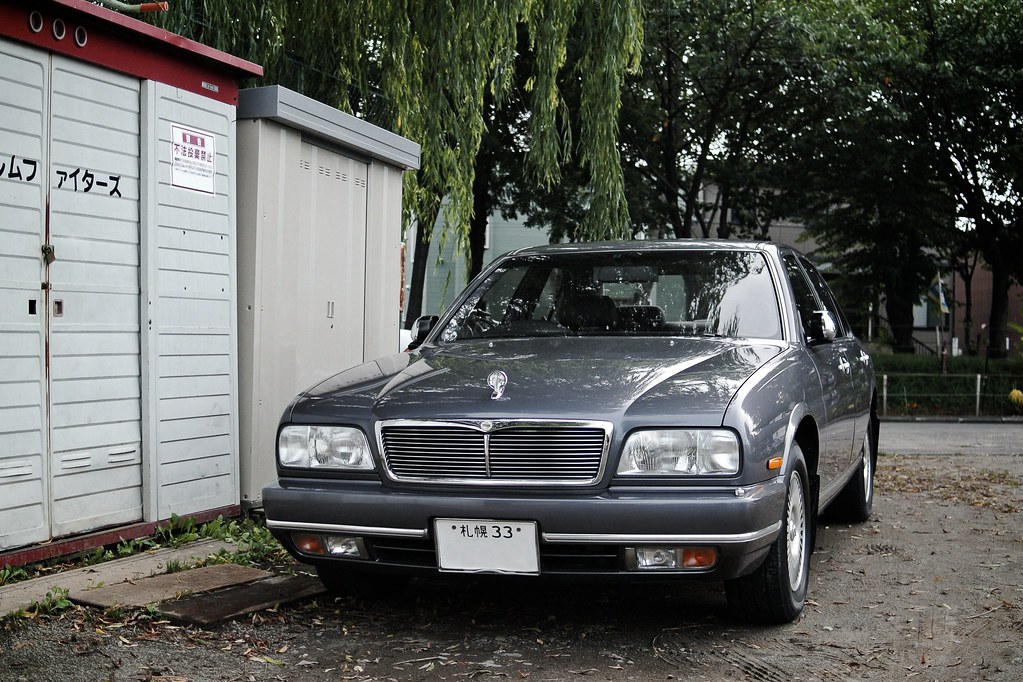
There’s something truly satisfying about breathing new life into a beloved vehicle, especially when it comes to the interior. Those old, worn-out door panels, once a source of quiet frustration, can be completely transformed with a weekend’s worth of dedicated effort. Imagine stepping into your car and being greeted by a fresh, custom look that not only enhances aesthetics but also brings a renewed sense of pride to your driving experience. This isn’t just a repair; it’s an interior revolution!
Many DIY enthusiasts might view reupholstering door panels as a daunting task, a project perhaps best left to the professionals. However, with the right tools, a clear approach, and a touch of patience, it’s a surprisingly straightforward endeavor that promises dramatic results. The beauty of this process is that it offers an easy way to give new life to an old worn-out interior, making it accessible even to those who aren’t seasoned upholstery experts. You can achieve a high-quality finish, often without the need for a single stitch, thanks to clever layering systems and robust adhesives.
This in-depth guide is designed to empower you through each crucial stage of the reupholstery process, ensuring that every step is clear, concise, and actionable. We’ll walk you through everything from gathering your materials to applying the final touches, drawing on proven techniques that guarantee a professional, cohesive look for your vehicle’s side door panel. Get ready to dive in and discover how easily you can achieve that custom, high-quality design you’ve always envisioned for your car’s interior.

1. **Gathering Your Materials and Tools**Before you embark on this exciting transformation, the absolute first step is to ensure you have all your materials and tools at the ready. This preparation is key to a smooth and efficient workflow, minimizing interruptions and helping you maintain momentum. You’ll need a variety of adhesives to ensure strong and lasting bonds, including 3M Adhesive Spray, contact cement, and potentially heavy-duty heat-resistant spray adhesive, depending on the specific layers you choose to implement. These are crucial for securing both your foam and vinyl to the door panel base.
For cushioning and texture, you’ll want to select appropriate foam. Options include Landau foam, which provides a soft, cushioned feel without being too bulky, or fabric-backed 1/2″ sew foam for a more traditional upholstery feel. When it comes to the new skin for your door panel, vinyl is a popular choice due to its durability and variety. Brands like Morbern™ Seabrook Stinger and Naugahyde® Universal are noted for their durability, ease of cleaning, abrasion resistance, and water resistance, offering excellent options for your project. Remember to ensure you have plenty of material to cover your entire project generously.
Cutting and shaping tools are indispensable for precision. A razor blade and/or scissors are essential for trimming and cutting foam and vinyl. For more professional results, consider a Comfort Grip Rotary Cutter, Gingher® Scissors, or a utility knife alongside a clear acrylic ruler and a Sailrite® Self Healing Double-Sided Cutting Mat for clean, straight cuts. If your project involves duplicating panels or adding fasteners, a hole cutter, a Barry King Mallet, and the Sailrite® Cutting Block and Die Holder will be invaluable for making precise holes.
Marking and finishing require attention to detail. A regular marker is good for initial tracings, while a Scribe-All® Water Soluble White Marking Pencil or Washable Wonder Fabric Marker Blue can be used for more precise, temporary marks that wash away easily. A Sharpie or similar tool is useful for pressing vinyl into pleat edges, creating crisp lines. For secure attachment, particularly at panel bottoms, 21 gauge 1/4″ stainless steel staples and a Sailrite® Long Nose Upholstery Staple Gun are recommended.
Finally, don’t overlook cleaning and repair essentials if you plan to address existing damage or prep surfaces. Plastic cleaner or rubbing alcohol will ensure surfaces are pristine, while various sandpaper grits (80, 120, 220), a plastic adhesion promoter, plastic repair epoxy or body filler, an applicator, sanding block, and masking tape can help mend any existing imperfections on your panels before the new upholstery is applied. Choosing the right vinyl upholstery fabric that perfectly suits your upholstery project, both in looks and durability, is important, and you can even order fabric samples to experience them in person.
Read more about: Redefining Defense: The 500 kW Laser and the Global Surge in High-Energy Weaponry Development

2. **Carefully Removing the Old Door Panel**With all your materials gathered, the next critical step is the careful removal of your vehicle’s existing door panels. This initial stage requires patience and precision to avoid damaging the panel or the surrounding door frame. On most vehicles, especially older models, door panels are typically held in place by a series of clips. These clips can be gently popped off using a specialized trim removal tool designed for automotive interiors, or if you’re careful, a flat-head screwdriver can serve as an alternative.
Before attempting to pry the panel off, it’s essential to unscrew anything that is directly connected to the door frame. This includes components like the armrest, door handle trim, window crank, and any other fixtures. These attachments often conceal additional fasteners or can prevent the panel from detaching cleanly if not removed first. Taking your time here will save you frustration and potential repairs later on.
Throughout the removal process, it’s paramount to handle the panel with significant care. Vehicle door panels are often not made of the sturdiest material, especially older ones, and can be prone to cracking or bending if undue force is applied. For classic cars, the process involves not only detaching the moldings but also carefully handling the fabric to avoid damaging the underlying cardboard base, which might be fragile.
Additionally, specific components like the metal tabs surrounding the lock button often need to be carefully bent or manipulated for removal. These small details can easily be overlooked but are crucial for a complete and damage-free separation of the panel from the door. A detailed guide highlights the importance of this step, ensuring that the existing structure remains intact for the new upholstery.
Once all fasteners and connections are released, the panel should come away from the door frame. Place it on a clean, flat surface where you can begin the next phase of its transformation. This methodical approach to removal sets the foundation for a successful reupholstering project, preserving the integrity of both your car and the panel itself.
Read more about: Navigating the 2025 Convertible Market: Top Models That Retain Their Value Best Over Time

3. **Breaking Down and Stripping the Old Skin**After successfully removing the door panel from your vehicle, the next step involves stripping away the old, worn-out skin to prepare for the new upholstery. This phase is about creating a clean canvas, ensuring that your new materials adhere smoothly and look professionally finished. You will need to carefully remove the existing fabric or vinyl, which may require a bit of effort depending on how it was originally secured.
As you begin to peel back the old material, you may encounter remnants of old glue or staples. These can be tenacious, and you might have to fight some of them to get the panel completely clean. A scraper, pliers, or a small pry tool can be useful for dislodging stubborn fasteners or adhesive residue. The goal here is to remove as much of the old material and adhesive as possible, leaving a relatively smooth and uniform surface behind.
Cleaning off what you can is a crucial part of this process. Any remaining bumps, old glue, or fragments of fabric could show through your new vinyl, compromising the final appearance. Use a stiff brush or a sandpaper block to smooth out any rough patches and ensure the surface is as clean as possible. This meticulous cleaning is vital to achieve the high-quality finish characteristic of a Popular Mechanics project.
This preparation step is more than just removing old material; it’s about assessing the integrity of the underlying panel structure. If the original cardboard or hardboard base is in poor condition, damaged, or severely warped, this is the time to identify those issues. Addressing these foundational problems now will prevent future issues and ensure the longevity of your newly upholstered panels.
By thoroughly stripping the old skin and cleaning the panel, you’re not just getting ready to trace; you’re setting the stage for a dramatic visual upgrade. This crucial step ensures that the new foam and vinyl will have a pristine surface to bond with, creating a seamless and resilient finish that truly transforms your vehicle’s interior.
Read more about: Beware: These Classic Cars Are Not Worth Restoring – An Expert Guide for Enthusiasts

4. **Preparing the Base Material (Hardboard/Cowlboard)**For projects where the original door panel base is damaged or if you’re aiming for a completely custom design, preparing a new base material is essential. A common and effective choice for this purpose is hardboard. In one project, a thickness of 3/16 inch was selected, striking an optimal balance: it’s thin enough to ensure that window cranks and door handles will function properly without obstruction, yet sturdy enough to provide a reliable and durable foundation for the new upholstery.
Hardboard typically comes with one smooth side and one rough side. This characteristic is beneficial for adhesion, as the rougher side can provide a better grip for the contact cement and foam you’ll be applying later. Alternatively, if your original car door panel is in bad shape, duplicating it on waterproof cowlboard is a viable consideration. This material offers resilience and can be marked easily with tools like the Scribe-All® Water Soluble White Marking Pencil, which washes away cleanly once its purpose is served.
Whether working with hardboard or cowlboard, accurately replicating the original panel’s shape is paramount. You’ll use your existing door panel as a template, carefully tracing its outline onto your chosen base material. Precision in this step ensures that the newly fabricated panel will fit perfectly back into your vehicle’s door frame. It’s a foundational step that impacts the success of the entire project, so take your time to get it right.
Once the outline is traced, meticulously cut out the new base panel. For certain applications, particularly if you are creating new mounting points or accommodating rivet fasteners, you may need to make precise holes. This can be achieved effectively using a hole cutter in conjunction with a Barry King Mallet 3# and the Sailrite® Cutting Block and Die Holder. These tools ensure clean, uniformly sized holes that will align perfectly with your vehicle’s mounting points.
This meticulous preparation of the base material is crucial for the structural integrity and overall fit of your newly upholstered door panel. A well-prepared base guarantees that the subsequent layers of foam and vinyl will sit correctly, contributing to a professional and long-lasting finish that truly elevates your car’s interior aesthetic.

5. **Tracing and Cutting the Foam Cushion**Once your door panel base is meticulously prepared, the next exciting step is to create the essential foam cushion that will provide comfort, texture, and a plush feel to your new interior. This involves precise tracing and cutting to ensure a perfect fit over your base material. Start by laying your chosen foam flat on a clean, stable table surface, ensuring it is smooth and free of wrinkles.
Next, take the interior side of your door panel base and carefully lay it face down onto the foam. This orientation allows you to accurately trace the exact contours of your panel. Using a marker, carefully trace the entire outline of your door panel onto the foam. This tracing acts as your guide for the subsequent cutting, so accuracy here will contribute significantly to the final, seamless appearance of your upholstered panel.
After tracing, remove the door panel from the foam and proceed to cut out your newly traced outline. It’s always a good practice to cut slightly outside the line if you’re unsure, as you can always trim more material later, but you can’t add it back. Once cut, perform a test fit on your panel to ensure it lines up perfectly. This step allows for any minor adjustments needed before the adhesive is applied, preventing misalignments that could impact the final look.
For those employing a layering system, particularly for adding depth and design, thin plywood—about the thickness of an ice cream stick—is often cut to size. This flexible yet sturdy material serves as an excellent base for the Landau foam, providing an additional layer of support and shaping. After cutting this plywood, a layer of contact cement is applied, and the foam is carefully glued onto it, creating a robust, multi-layered foundation.
This careful process of tracing and cutting your foam cushion is vital for achieving the desired tactile quality and visual appeal of your door panels. Whether you’re using a single layer of foam or building up multiple layers with plywood, precision in this stage ensures that your new upholstery will have a smooth, well-defined, and comfortable foundation.
Read more about: 12 Ingenious Home Hacks: Transform Everyday Items into Powerful Problem-Solvers for a Smarter, More Efficient Home

6. **Applying the Foam to the Panel Base**With your foam cushion meticulously traced and cut, the next crucial step is to securely adhere it to your prepared door panel base. This is where the chosen adhesive comes into play, ensuring a lasting bond that withstands the rigors of daily vehicle use. Begin by applying your adhesive spray to the panel side of the foam. Simultaneously, apply adhesive to the corresponding surface of your door panel base.
After applying the adhesive, it’s important to allow both surfaces to sit for a brief period until the adhesive begins to get tacky. This tackiness is essential for a strong, immediate grip, preventing the foam from shifting during application. Follow the manufacturer’s instructions for the specific adhesive you are using, as drying times can vary. Patience in this step will pay off in the long-term durability of your reupholstery.
Once both surfaces are tacky, carefully align the foam cushion with your door panel base and apply it. Take your time to ensure proper alignment, working slowly from one edge to the other to minimize air bubbles or wrinkles. Once the foam is in place, press down firmly across the entire surface to ensure complete contact and allow the adhesive to dry completely, creating a secure bond.
For projects utilizing Landau foam, it should be securely adhered to the plywood base using contact cement, emphasizing the need for a strong and even application. After the adhesive has dried and the foam is firmly in place, it’s highly recommended to lightly sand the edges of the foam. Hand-sanding ensures a neat, smooth finish, which is crucial for giving the panel a clean, tucked appearance once the vinyl is applied.
Finally, after the foam is dried and its edges are smoothed, you are ready to cut out any necessary openings for handles, switches, or other hardware. Starting with smaller cuts and gradually enlarging them is a smart approach, as you can always increase your cuts but cannot easily undo them. Be mindful to avoid using rotary tools during this edging and trimming step, as they can easily damage the foam, compromising the smooth foundation you’ve worked hard to create.” , “_words_section1”: “1965
Read more about: Unlock Showroom Shine: The Ultimate Popular Mechanics Guide to Washing and Waxing Your Car for Lasting Paint Protection

7. **Designing and Applying the New Vinyl Skin**The moment has arrived to truly bring your vision to life: applying the new vinyl skin to your meticulously prepared door panel. This stage is where your custom aesthetic takes shape, transforming a bare base into a polished interior element. Before laying down the vinyl, it’s a smart move to plan your panel’s layout, especially if you’re aiming for decorative features like simulated pleats. This forethought ensures a cohesive and professional finish, much like the detailed guides found in Popular Mechanics.
For those adventurous enough to incorporate pleats, the design often includes using thin strips of plywood with Landau foam on top to create the raised sections. A significant gap is intentionally left between each pleat. This spacing isn’t just for looks; it’s crucial to allow the vinyl to stretch smoothly and cover the edges without overcrowding the design, which helps in reducing the risk of bunching and ensures a clean, crisp line. This careful planning stage is what elevates a simple reupholstery job into a true custom upgrade.
Once your design is set, or if you’re going for a sleek, flat finish, lay your chosen vinyl flat on a clean table, “face” down. Then, position your door panel, foam-side down, onto the back of the vinyl. Loosely trace around the panel, making sure to leave a generous 2-3 inch gap around the entire perimeter. This margin is essential, providing ample room for stretching the vinyl and securely adhering it to the back of the panel, which is a key technique for achieving a taut and wrinkle-free surface.
Now, it’s time for the adhesive. Apply a strong adhesive, specifically designed for Landau foam and vinyl tops, to the back of the vinyl you’ve just cut. Simultaneously, apply adhesive to the foam surface of your door panel. Patience is a virtue here: let both surfaces sit for a bit until the adhesive becomes properly tacky. This tackiness is vital for a robust, long-lasting hold that prevents the vinyl from peeling or loosening over time, a common pitfall that a high-quality adhesive helps to avoid.
With both surfaces tacky, carefully begin applying the vinyl to the panel. This step often requires considerable manipulation, stretching, and strategic slicing, especially around corners. As you work, strive to pull the vinyl taut, ensuring it conforms smoothly to the foam and panel contours. On tricky corners, you’ll likely need to make small, careful slices in the vinyl to help it fit properly and lay flat. Remember, precision in stretching and placement is what yields that desirable factory-fresh appearance.

8. **Expertly Securing the Vinyl and Trimming Excess**Once the vinyl is initially laid out and stretched across the face of the panel, the next critical phase involves securing it firmly and meticulously, focusing on the details that define a professional finish. This part of the process can be both frustrating and time-consuming, demanding a steady hand and a good deal of patience. The goal is to ensure the vinyl adheres flawlessly to the contours of your door panel without any unsightly bubbles or wrinkles, effectively creating a smooth, new skin for your car’s interior.
A common technique for defining details, especially in designs featuring pleats, is to use a Sharpie or a similar tool to press the vinyl firmly into the edges of these pleats. This action creates crisp, clean lines that highlight your custom design, giving it a sharp, professional finish without the need for sewing. It’s these small, deliberate actions that contribute significantly to the overall aesthetic quality, ensuring your panels look as though they were crafted by an expert.
As you work your way around the panel, ensuring the vinyl is taut and positioned correctly, you’ll need to secure the excess material to the back of the panel. For this, a combination of strong adhesive and, in some areas, staples can be employed. Staples, particularly 21 gauge 1/4″ stainless steel staples, used with a Sailrite® Long Nose Upholstery Staple Gun, are recommended for anchoring the vinyl securely, especially at the bottom of the panel where tension will be applied. This dual-method approach ensures maximum durability and prevents the vinyl from shifting or coming loose over time.
While working with adhesives, a crucial cautionary note is to take special care to avoid getting any adhesive on the nice, visible surface of your new vinyl. Accidental contact can mar the pristine finish, creating a sticky residue or discoloration that is difficult to remove. Should an unfortunate mishap occur, addressing it immediately with the appropriate cleaner—like plastic cleaner or rubbing alcohol—can help mitigate the damage, though prevention is always the best strategy for maintaining a flawless surface.
After securing the vinyl to the back of the panel, you’ll inevitably have some excess material. This is where your razor blade or scissors come in handy. Carefully trim away any remaining overhang, ensuring a neat, clean edge around the entire perimeter of your panel. This step is about refining the overall shape and preparing the panel for its reinstallation, removing any bulk that could interfere with the fit or appearance once back in the vehicle.

9. **Precision Cutting for Hardware Openings**With your new vinyl skin firmly in place and smoothly adhering to the door panel, the next crucial step is to create the necessary openings for your vehicle’s hardware, such as door handles, window cranks, lock buttons, and switches. This stage demands precision and a methodical approach, as accurate cutouts are vital for the full functionality and integrated appearance of your newly upholstered panels. Rushing this step can lead to misaligned components or even damage to your pristine vinyl.
The golden rule for cutting openings is to “always start small; you can always increase your cuts.” This conservative approach minimizes the risk of over-cutting, which is an irreversible mistake that can compromise the entire panel. Begin by making a small, initial incision or pilot hole, then gradually enlarge it, constantly checking against the hardware to ensure a perfect fit. This method applies whether you’re cutting through the foam and vinyl, or just the vinyl layer.
For making precise holes, especially for rivet fasteners or lock button mechanisms, specialized tools can be invaluable. A hole cutter, used in conjunction with a Barry King Mallet and the Sailrite® Cutting Block and Die Holder, allows for clean, uniformly sized holes that will align perfectly with your vehicle’s mounting points. These tools ensure a professional result, preventing ragged edges that might otherwise detract from the panel’s overall finish.
It is important to remember that while rotary tools are excellent for many tasks, they are best avoided during this specific edging and trimming step, particularly when working with foam. Rotary tools can easily damage the foam, creating an uneven foundation that could show through your vinyl and compromise the smooth surface you’ve meticulously worked to achieve. Stick to sharp razor blades, utility knives, or dedicated hole cutters for the cleanest results.
As you make each cut, pause to verify that the opening is not only correctly sized but also perfectly aligned with its corresponding hardware. This meticulous attention to detail ensures that all handles, switches, and other components will function flawlessly and sit flush with your newly upholstered surface. Once you’re satisfied with your cuts, the panel is nearly ready for its final securing and reinstallation into your vehicle.
Read more about: Unlocking the Quantum Chip: Google’s Latest Leap in Computing’s Next Frontier

10. **Finalizing Edges and Attaching Backings**After all the primary vinyl application and hardware openings are complete, the true mark of a professional reupholstery job lies in the final touches, particularly how the edges are finished and secured. This stage is about tidying up any loose ends, reinforcing critical areas, and ensuring that the back of the panel is as neat and secure as the front. It’s these often-unseen details that contribute to the longevity and overall quality of your custom interior.
One of the key final steps involves pulling the edges of the vinyl taut and securely adhering them to the back of the panel. When applying glue to these edges, it’s important to use just enough to hold the material firmly in place without overdoing it. Excessive glue can take longer to dry, potentially seep through the material, or even cause issues with the final fit. The aim is a strong, clean bond that won’t come undone with time and use, maintaining the integrity of your hard work.
For consistent design and added structural support, particularly at the bottom section of the door panel, a thin piece of plywood can be added. This strategic addition ensures uniformity in the panel’s thickness and aesthetic. Following this, a final vinyl wrap is often applied to finish off this bottom edge, creating a clean, integrated look that seamlessly connects all parts of the upholstered panel. This layered approach provides both durability and a refined appearance, mimicking professional manufacturing techniques.
As you secure the edges to the back, meticulously inspect for any areas that might require additional trimming or minor adjustments. This is your last chance to perfect the overall shape and ensure that the panel will fit snugly and correctly back into your car’s door frame without any impediments. Taking the time for these final refinements will prevent frustration during reinstallation and guarantee a truly flawless interior upgrade.
Furthermore, now is the time to reattach any clips or weatherstripping that were removed during the initial disassembly. These components are essential for the proper fit, sealing, and functionality of your door panel. Carefully position and secure them, ensuring they are oriented correctly to snap back into their respective slots on the car door. This preparation makes the reinstallation process much smoother and helps restore your door panel to its original, fully functional state.

11. **Reinstalling the Transformed Door Panel**The moment of truth has arrived: reinstalling your beautifully transformed door panel back into your vehicle. This is where all your diligent work, from material gathering to meticulous vinyl application, culminates in a stunning interior upgrade. Reinstallation is generally a more straightforward process than removal, especially if you meticulously tracked where all clips and fasteners belonged, but still requires care to avoid damaging your pristine new upholstery or the vehicle itself.
For many vehicles, particularly older models, the door panels are primarily secured by a series of clips. Reinstalling often involves little more than aligning the panel with the corresponding slots on the door frame and gently but firmly popping the clips back into place. Listen for the satisfying clicks that indicate a secure fit, working your way around the panel to ensure every clip is properly engaged. This method helps the panel sit flush against the door, preventing rattles and ensuring a snug fit.
Once the main panel is clipped into position, it’s time to reattach any components that were unscrewed from the door frame. This typically includes the armrest, the door handle trim, and the window crank, or any power window/lock switches. Carefully align each piece with its mounting points and secure them with their original screws. Taking your time here ensures that everything is fastened correctly and functions smoothly, just as it did before.
It is particularly gratifying to see the armrest and window lever back in place, completing the look. If, like in some projects, existing door handle trims were sunbaked and broken, this might be the perfect opportunity to replace them or consider aesthetic solutions to hide any visible cuts made for hardware. The aim is to achieve a professional, cohesive look throughout your vehicle’s side door panel, creating an interior that feels brand new and custom-tailored.
Finally, after all components are reattached and tightened, give your newly installed door panel a gentle inspection. Check for any loose points, ensure all hardware operates freely, and admire the seamless integration of your custom work with the rest of your vehicle’s interior. Pat yourself on the back; you’ve just breathed new life into your car’s aesthetics and functionality with a high-quality, DIY transformation.
Read more about: Seven American Icons: The Surprising Truth About Their High Maintenance Demands Today
12. **Post-Installation Care and Addressing Minor Imperfections**With your vehicle’s door panels now expertly reupholstered and reinstalled, the project is largely complete. However, maintaining that fresh, custom look and addressing any minor imperfections that might arise or were pre-existing is an essential final step for true DIY enthusiasts. This attention to detail ensures the longevity of your work and keeps your interior looking impeccable, reflecting the comprehensive approach that Popular Mechanics readers appreciate.
Even with the most meticulous preparation, sometimes existing plastic components, like the lower half of doors or other interior plastics, might appear faded in contrast to your vibrant new upholstery. This is an excellent opportunity for an “extra step.” Consider using a product like a Duplicolor interior plastic spray system to touch up faded plastics. By simply following the manufacturer’s instructions, you can rejuvenate these surfaces, ensuring a harmonious and polished look throughout your car’s interior. The results can be truly amazing, making the entire cabin feel refreshed.
For any minor cracks or tears that might have been present on the original panel base or could occur post-installation, a quality vinyl repair kit is highly recommended. These kits often come with specialized adhesives and fillers that can restore the panel’s appearance. For smaller cracks, technicians typically use such kits, filling and smoothing the crack with patience and precision. You can also use plastic adhesion promoter, plastic repair epoxy or body filler, and various sandpaper grits (80, 120, 220) for more robust repairs, cleaning the area with plastic cleaner or rubbing alcohol beforehand.
Should you encounter any peeling vinyl later on, an iron set to a high temperature (ideally above 340°F) with parchment paper between the iron and vinyl can be used to reapply heat and pressure. For minor issues, reapplying heat for 2-3 seconds might suffice, or for stubborn spots, placing a small piece of vinyl underneath and pressing with the iron can help. Ensuring your heat press temperature is correct and allowing 24 hours after application before washing are key for proper adhesion. Fabric glue can also serve as an effective alternative for fixing loose vinyl.
Finally, regular cleaning and maintenance are paramount for preserving your newly upholstered panels. For cleaning vinyl, opt for warm, soapy water or a suitable vinyl cleaner that won’t leave residue. Use a microfiber towel and avoid harsh cleaners or hard-bristled brushes, which can dull or damage the surface. For scratches, acrylic cleaner applied in a circular motion on a dry cloth can help. Treating vinyl surfaces with a protectant after drying is also a good practice, enhancing their shine and longevity. This diligent care ensures your transformed interior remains a source of pride for years to come.




